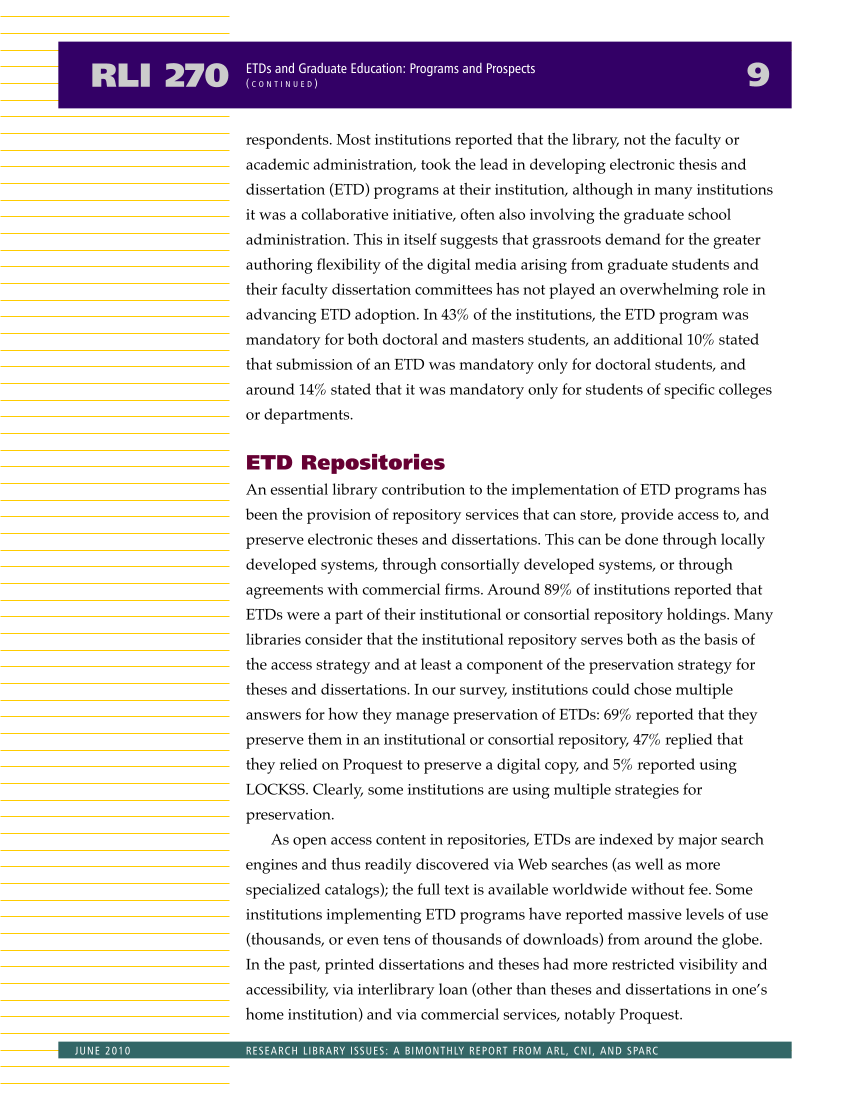respondents. Most institutions reported that the library, not the faculty or academic administration, took the lead in developing electronic thesis and dissertation (ETD) programs at their institution, although in many institutions it was a collaborative initiative, often also involving the graduate school administration. This in itself suggests that grassroots demand for the greater authoring flexibility of the digital media arising from graduate students and their faculty dissertation committees has not played an overwhelming role in advancing ETD adoption. In 43% of the institutions, the ETD program was mandatory for both doctoral and masters students, an additional 10% stated that submission of an ETD was mandatory only for doctoral students, and around 14% stated that it was mandatory only for students of specific colleges or departments. ETD Repositories An essential library contribution to the implementation of ETD programs has been the provision of repository services that can store, provide access to, and preserve electronic theses and dissertations. This can be done through locally developed systems, through consortially developed systems, or through agreements with commercial firms. Around 89% of institutions reported that ETDs were a part of their institutional or consortial repository holdings. Many libraries consider that the institutional repository serves both as the basis of the access strategy and at least a component of the preservation strategy for theses and dissertations. In our survey, institutions could chose multiple answers for how they manage preservation of ETDs: 69% reported that they preserve them in an institutional or consortial repository, 47% replied that they relied on Proquest to preserve a digital copy, and 5% reported using LOCKSS. Clearly, some institutions are using multiple strategies for preservation. As open access content in repositories, ETDs are indexed by major search engines and thus readily discovered via Web searches (as well as more specialized catalogs) the full text is available worldwide without fee. Some institutions implementing ETD programs have reported massive levels of use (thousands, or even tens of thousands of downloads) from around the globe. In the past, printed dissertations and theses had more restricted visibility and accessibility, via interlibrary loan (other than theses and dissertations in one’s home institution) and via commercial services, notably Proquest. RLI 270 9 ETDs and Graduate Education: Programs and Prospects ( C O N T I N U E D ) JUNE 2010 RESEARCH LIBRARY ISSUES: A BIMONTHLY REPORT FROM ARL, CNI, AND SPARC



































